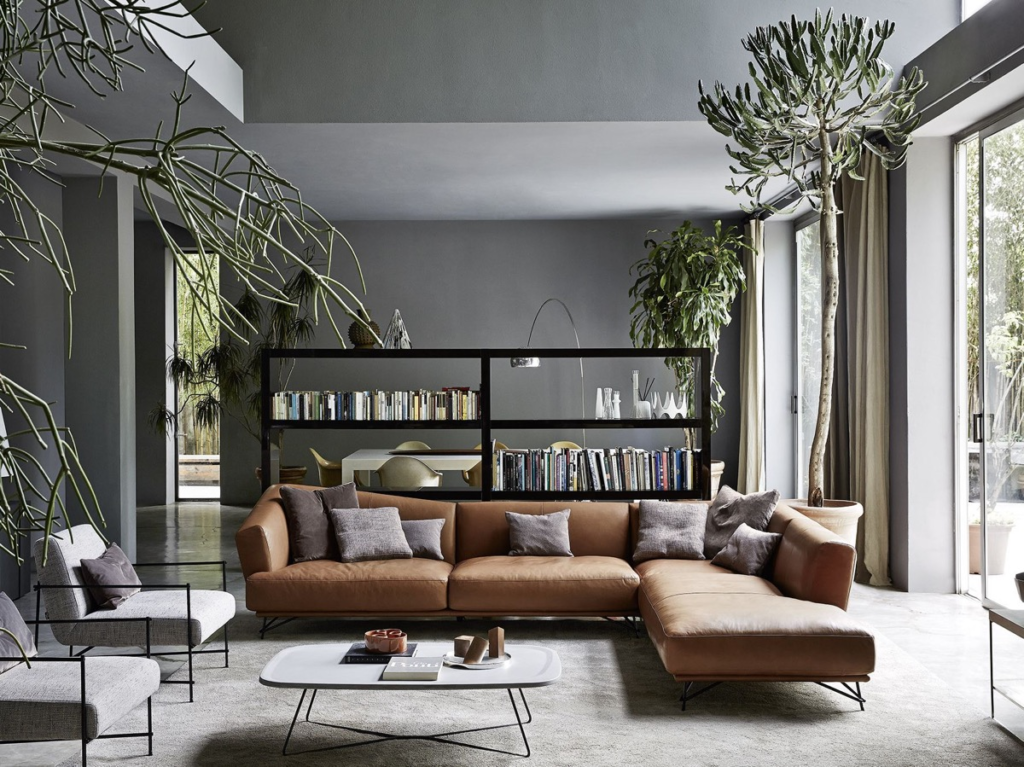Designing a living room with a nature-inspired theme can bring the beauty and tranquillity of the outdoors into your home. This style of decor is often characterized by the use of natural materials, such as wood and stone, as well as a color palette inspired by nature, such as greens, blues, and earth tones. Incorporating plants and natural elements, such as seashells and stones, can also add to the natural feel of the space. Using natural light and ensuring good ventilation can help create a bright and airy atmosphere. By incorporating these elements, you can create a living room that is comfortable, relaxing, and in harmony with nature.
Designing a Living Room for Optimal Natural Airflow
Here are a few additional tips for designing a living room to optimize natural airflow:
- Use a natural ventilation system: A natural ventilation system, such as a wind tower, can help draw fresh air into the room and exhaust stale air.
- Install louvred windows: Louvered windows can be opened to allow for airflow, but can also be closed for privacy or to block out noise.
- Use a dehumidifier: A dehumidifier can help remove excess moisture from the air, which can make the room feel more comfortable and prevent mould growth.
- Open windows during the cooler parts of the day: To take advantage of natural airflow, try opening windows during the cooler parts of the day to allow fresh air to enter the room.
- Use a fan: A fan can help circulate air and create a breeze in the room.
- Consider the layout of the room: The layout of the room can impact airflow. Try to arrange the furniture to allow air to flow freely around the room.
- Use airflow-enhancing accessories: There are a variety of accessories, such as air purifiers and humidifiers, that can help improve the airflow in a room.
Designing a Living Room for Optimal Natural Light
Here are a few tips for designing a living room to optimize natural light:
- Use light-colored walls: Light-colored walls can help reflect natural light and make the room feel brighter and more open.
- Choose furniture wisely: Avoid using dark, heavy furniture, as it can make the room feel smaller and darker. Instead, opt for light-colored, airy furniture to help reflect natural light.
- Use mirrors: Mirrors can help reflect natural light and make the room feel brighter and more open.
- Incorporate skylights: Skylights can bring natural light into the room from above, which can help make the space feel brighter and more welcoming.
- Use sheer curtains or blinds: Sheer curtains or blinds allow natural light to enter the room while still providing privacy.
- Use a light-colored area rug: A light-colored area rug can help reflect natural light and make the room feel brighter.
- Choose light-colored accessories: Light-colored accessories, such as throw pillows and decorative objects, can help reflect natural light and add a touch of brightness to the room.
- Keep the room clutter-free: A cluttered room can feel darker and more cramped, so try to keep the space as organized as possible to allow for the maximum amount of natural light.
Designing a Living Room for Optimal Natural Warmth
Here are a few tips for designing a living room to optimize natural warmth:
- Use insulation: Proper insulation can help keep the warmth in and the cold out, making the room more comfortable and energy efficient.
- Use thermal curtains: Thermal curtains can help keep the heat in and the cold out, making the room more comfortable and energy efficient.
- Choose furniture wisely: Heavy, insulated furniture can help keep the room warm. Consider using furniture with natural materials, such as wool or leather, which can help regulate temperature.
- Use area rugs: Area rugs can help insulate the floor and add warmth to the room.
- Use a fireplace or wood stove: A fireplace or wood stove can add warmth and ambiance to the room.
- Use natural materials: Natural materials such as wood, stone, and wool can help regulate temperature and humidity in the room, making it more comfortable and pleasant to be in.
- Incorporate plants: Plants can help regulate humidity and add a touch of greenery to the room.
- Use a space heater: A space heater can provide extra warmth when needed. Just be sure to use it safely and follow the manufacturer’s instructions.
Recommended Reading: Fabulous Living Room Interior Decor Ideas for Every Home
Did you like this article?
Share it on any of the following social media channels below to give us your vote. Your feedback helps us improve.




















